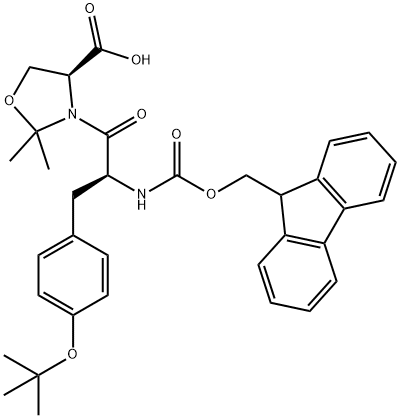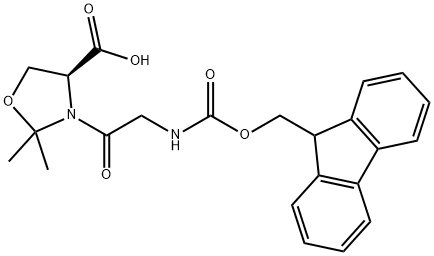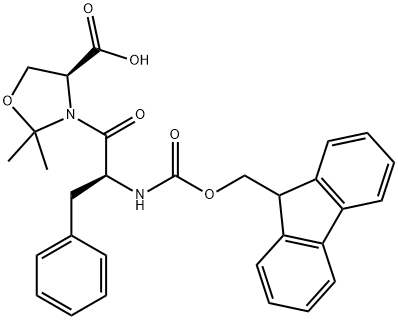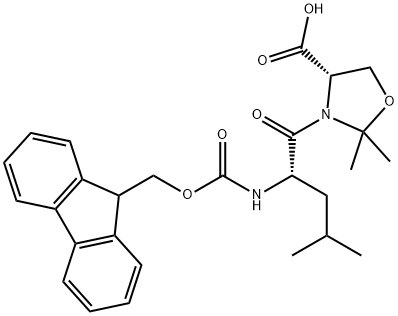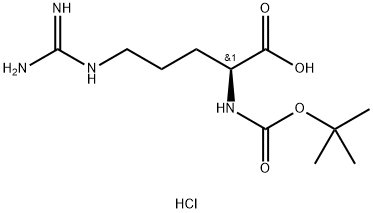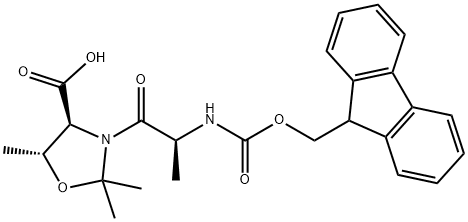BD9888355
(S)-3-((S)-2-((((9H-Fluoren-9-yl)methoxy)carbonyl)amino)-3-(4-(tert-butoxy)phenyl)propanoyl)-2,2-dimethyloxazolidine-4-carboxylicacid , 98% , 878797-09-2
Synonym(s):
Fmoc-Tyr(tBu)-Ser(psiMe,Mepro)-OH
| Pack Size | Price | Stock | Quantity |
| 250mg | RMB317.60 | In Stock |
|
| 1g | RMB816.80 | In Stock |
|
| 5g | RMB2844.00 | In Stock |
|
| others | Enquire |
Update time: 2022-07-08
PRODUCT Properties
| Boiling point: | 795.6±60.0 °C(Predicted) |
| Density | 1.238±0.06 g/cm3(Predicted) |
| storage temp. | Store at +2°C to +8°C. |
| pka | 3.09±0.40(Predicted) |
| form | powder |
| InChIKey | DNJYPUYQFPFOKS-VMPREFPWSA-N |
| SMILES | O1C[C@@H](C(O)=O)N(C(=O)[C@@H](NC(OCC2C3=C(C=CC=C3)C3=C2C=CC=C3)=O)CC2=CC=C(OC(C)(C)C)C=C2)C1(C)C |
Description and Uses
Fmoc-Tyr(tBu)-Ser(Psi(Me,Me)pro)-OH is mainly used in peptide synthesis. It consists of a dipeptide in which the serine residue has been reversibly protected as a structure-damaging proline-like TFA-labile oxazolidine. The reason for introducing the pseudoproline residue as a dipeptide is that it avoids the acylation of the hindered oxazolidine nitrogen. This has the added advantage of extending the peptide chain by two residues in a single step. The serine residue is regenerated in the normal trans fatty acid mediated cleavage reaction.
Safety
| Symbol(GHS) |  GHS07 |
| Signal word | Warning |
| Hazard statements | H302-H315-H319-H335 |
| Precautionary statements | P261-P280-P301+P312-P302+P352-P305+P351+P338 |
| HS Code | 2934999090 |

